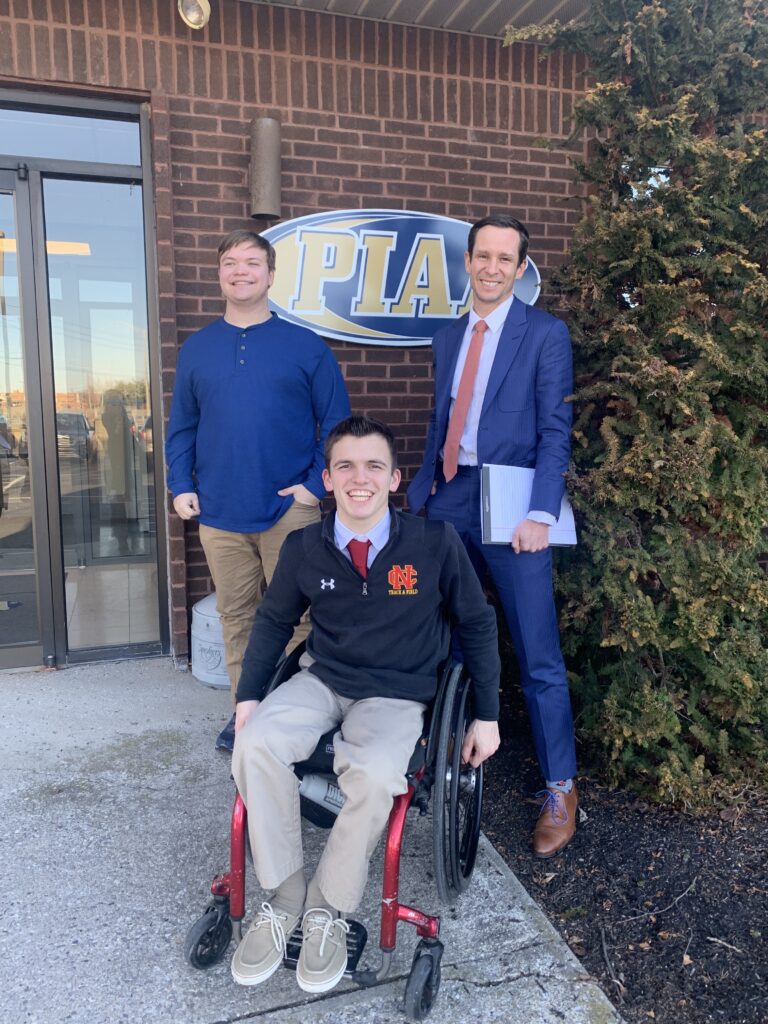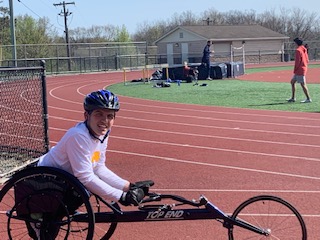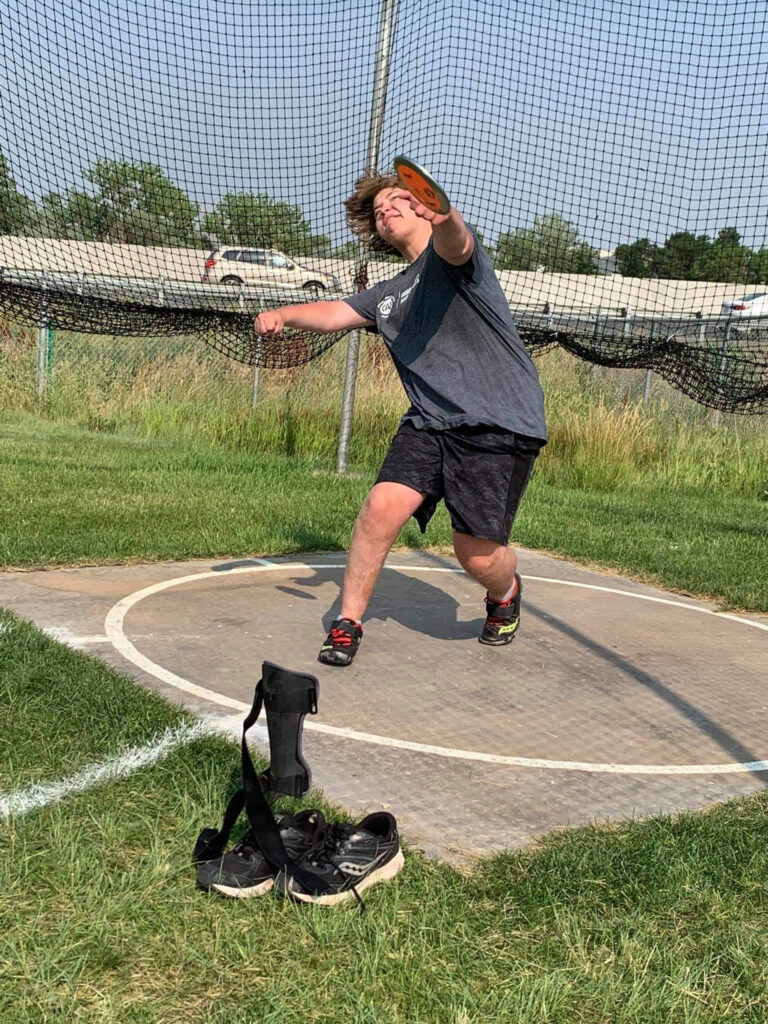
In a groundbreaking vote on March 22, 2023, Pennsylvania Interscholastic Athletic Association (PIAA) adopted a modified version of a proposal from Alex Brown (North Catholic) and Trent Clayton (West Chester East) to allow students with disabilities to compete at PIAA’s annual Track and Field Championships.
The vote comes almost two years after East End Trial Group filed a class action complaint on Alex and Trent’s behalf, asserting PIAA violated Titles II and III of the ADA, and Section 504 of the Rehabilitation Act by limiting postseason eligibility to “able-bodied athletes.” You can read more about Alex and Trent’s lawsuit here and here.
In addition to removing the able-only language from its policies, PIAA’s Board of Directors approved the creation of new divisions for boys and girls track and field. Beginning in 2023, athletes may now compete in up to six events as part of new Wheelchair and Para Ambulatory Divisions.
According to attorney Kevin Tucker, whose firm represented Alex and Trent pro bono, “these changes give students with disabilities access to competitive opportunities that didn’t exist in Pennsylvania before Alex and Trent demanded equality. Now, for the first time, a uniform process exists through which Wheelchair and Para Ambulatory Athletes can qualify for district and state championships, earn individual and team medals, and set state records. In addition to the values of competition and teamwork, the new system will also expose students with disabilities to a growing number of opportunities to compete collegiately, including the chance to earn athletic scholarships and NIL deals, like their classmates.”
Read the full Policy Regarding The Participation Of Para Ambulatory And Wheelchair Athletes In The Sport Of Outdoor Track And Field on page 123 at http://www.piaa.org/assets/web/documents/Handbook%20-%20Section%20II%20-%20Policies%20and%20Procedures.pdf.
If you have questions about competing in the new Wheelchair or Para Ambulatory Divisions, contact your school’s track & field coaches, principal, or athletic director. The attorneys at East End Trial are also happy to answer any questions you may have about these changes or your legal rights.
What do Alex and Trent have to say about the changes?

I’ve been competing since 3rd grade as a wheelchair track & field athlete. In entering high school, I was disappointed to see that there wasn’t an opportunity to do more than just local meets. I’m thankful that starting this season, Pennsylvania will join more than 25 other states that offer adaptive track and field.
Track and field is the only sport I can participate in at my high school. I enjoy being part of a team and representing North Catholic. Our athletic office, coaches, principals and my teammates have made this a great experience for me. I can’t wait to see the number of adaptive athletes grow!
This would not be possible without the extraordinary efforts of Kevin Tucker and his wonderful staff, Wendy Fagan, John Sikora and many others who supported our efforts. – Alex Brown

I’m an athlete with hemiplegic CP. I competed on my high school track team from grades 9-12. I got a lot out of the experience; the coaches were great and I liked being with the other students.
But I knew going into every season that I wasn’t going to be successful in the traditional way. I wouldn’t earn any points for my team and I wouldn’t throw anywhere close to the standards required for states. I tried not to get discouraged.
So I focused on personal bests. I knew what the national record was for my disability classification and I kept my eye on that. I broke it twice in high school and still hold the U17 and the U20 records. Despite being a national record holder and a US Para All American Athlete, I was never able to throw at states for my high school.
While we weren’t able to accomplish all we wanted in working with PIAA, I’m focusing on the progress. This plan is much better than what I had as a student athlete. I hope that it will encourage other students with disabilities to get active and try track and field! I coach discus for the Pennsylvania Center for Adapted Sport; if you’re in the eastern Pennsylvania, come out and join us! – Trent Clayton
“About two years ago, I had requested information from WPIAL/PIAA about the wheelchair high school track & field policy. Unfortunately, the policy didn’t offer a full experience which motivates athletes to work hard to qualify to advance. We are pleased to see that in Alex’s junior season, he will have the opportunity to earn the chance to go to Districts and States. Thankfully Alex’s school, coaches and classmates made it easy for him to participate. The barriers were in the program itself. Through the persistence of Kevin’s amazing team, including Stephanie and Chander, PIAA has approved an official policy to include wheelchair & para-ambulatory athletes to join track & field. Now there is an invitation for adaptive athletes to join their middle school and high school track teams. We hope this is just the beginning!” – Amy Brown (Alex’s mom)
“I watched as Trent competed in discus all through high school and became more disheartened every year. It’s hard to feel like a true part of a team when you know you can’t make it to post season competition or earn points for your team. Although this plan isn’t perfect, I’m choosing to celebrate the progress. As an adapted track and field coach, I am incredibly relieved to know that my athletes will have more opportunities to truly be part of their high school teams. This is going to make their high school track and field careers so much more positive and for that I’m thrilled and beyond thankful to Kevin for all he did to make it happen. I really hope that this plan will give teachers and coaches the initiative to encourage students with disabilities to try something new and get on the track!” – Dr. Darla Clayton (Trent’s mom)
FAQs
Who is eligible?
To compete in the Wheelchair Division, a student athlete must have “a permanent muscular or neuromuscular disability, which significantly limits the student’s ability to move, or a permanent skeletal deformity or abnormality, which significantly affects ambulation, and who competes seated.” Wheelchair Athletes may include, but are not limited to, athletes with:
- impaired muscle power due to a spinal cord injury, spina bifida, polio, etc.;
- athletes with passive range of motion due to arthrogryposis, joint fusion, etc.;
- athletes with hypertonia, ataxia, and/or atheosis athletes with abnormal tone involvement or cerebral palsy; and
- leg amputees who choose to compete seated.
To compete in the Para Athlete Division, a student athlete must have “an orthopedic, neuromuscular, or other physical disability, and who does not compete seated.” Para Ambulatory Athletes may include, but are not limited to:
- amputees;
- athletes with impaired passive range of motion, limb deficiency, or short stature;
- athletes with a visual impairment;
- athletes with an intellectual impairment; and
- athletes with hypertonia, ataxia, and/or athetosis athletes with abnormal tone involvement or cerebral palsy.
What events are included?
Wheelchair Athletes may participate in any combination of up to four (4) of the following events in a single meet:
Para Ambulatory Athletes may participate in any combination of up to four (4) of the following events in a single meet:
- 100-meter dash;
- 200-meter dash;
- 400-meter dash;
- shot put; and
- discus throw.
Can I compete in the postseason?
Yes! Wheelchair and Para Ambulatory Athletes may participate in any combination of four (4) of the following events at a District Championship Meet and State Championship Meet: 100 meter dash; 200 meter dash; 400 meter dash; 800 meter run (Wheelchair Athletes only); shot put; and discus throw.
To qualify for a District Championship Meet, a competitor’s school must certify to the District that the competitor has, in at least one regular season dual meet or invitational that season, met or exceeded the applicable qualifying standard for that event, as summarized in the chart below.
To qualify for the State Championship Meet, the PIAA District at which the competitor participated must certify to PIAA that the competitor, at that District’s Championship Meet, met or exceeded the applicable qualifying standard for that event, as summarized in the chart below.
| WHEELCHAIR ATHLETES | ||
| Boys | Girls | |
| 100-meter dash | :25 | :32 |
| 200-meter dash | :50 | 1:05 |
| 400-meter dash | 1:40 | 2:00 |
| 800-meter run | 3:00 | 3:30 |
| shot put | 8-2 | 6-6 |
| discus throw | 14-9 | 9-10 |
| PARA AMBULATORY ATHLETES | ||
| Boys | Girls | |
| 100-meter dash | :21 | :24 |
| 200-meter dash | :38 | :45 |
| 400-meter dash | 1:20 | 1:40 |
| shot put | 20 | 16 |
| discus throw | 30 | 22 |
PIAA’s classification parameters will not apply to the events in which Para Ambulatory Athletes and Wheelchair Athletes compete in a State Track and Field Championship. All such athletes shall compete in (for track events) a single race involving only those athletes. For throwing events, they shall compete as a group.
Can I earn a medal?
Yes! Wheelchair and Para Ambulatory Athletes can earn individual awards at the PIAA Championship Meet.
For each event in which two or more Wheelchair Athletes or Para Ambulatory Athletes compete, gold, silver, and bronze medals will be presented to the top finishers based on place, time and distance consistent with any other event in which students without disabilities compete.
If only one Wheelchair Athlete or Para Ambulatory Athlete competes in an event, then gold, silver, and bronze medals will be presented based on the athlete’s performance, as summarized by the tables below.
MEDAL STANDARDS FOR MALE WHEELCHAIR ATHLETES
| 100-meters | 200-meters | 400-meters | 800-meters | Shot-put | Discus | |
| Gold | :19.5 | :42.0 | 1:10 | 2:35 | 14’ 6” | 34’ |
| Silver | :21.0 | :44.0 | 1:15 | 2:40 | 13’ | 30’ |
| Bronze | :22.5 | :46.0 | 1:20 | 2:45 | 11’ 6” | 26’ |
MEDAL STANDARDS FOR FEMALE WHEELCHAIR ATHLETES
| 100-meters | 200-meters | 400-meters | 800-meters | Shot-put | Discus | |
| Gold | :22.5 | :55.0 | 1:20 | 2:45 | 14’ | 28’ |
| Silver | :24.5 | :57.0 | 1:25 | 2:55 | 12’ 6” | 24’ |
| Bronze | :26.5 | :59.0 | 1:30 | 3:05 | 11’ | 20’ |
MEDAL STANDARDS FOR MALE PARA AMBULATORY ATHLETES
| 100-meters | 200-meters | 400-meters | Shot-put | Discus | |
| Gold | :14.0 | :27.5 | 1:05 | 27’ 5” | 50’ |
| Silver | :14.5 | :28.5 | 1:07.5 | 26’ | 42’ 5” |
| Bronze | :15.0 | :29.5 | 1:10 | 24’ 5” | 35’ |
MEDAL STANDARDS FOR FEMALE PARA AMBULATORY ATHLETES
| 100-meters | 200-meters | 400-meters | Shot-put | Discus | |
| Gold | :17.0 | :41.0 | 1:35 | 25’ | 42’ |
| Silver | :18.0 | :43.0 | 1:40 | 22’ | 36’ |
| Bronze | :19.0 | :45.0 | 1:45 | 19’ | 30’ |
Will PIAA tracks records set at the State Championship Meet?
Yes! PIAA will maintain a record book of the top performances recorded by Wheelchair and Para Ambulatory Athletes at the state championship meet.
Can Wheelchair and Para Ambulatory Athletes score points for their team?
Yes, sort of.
PIAA has adopted performance standards that middle school and high school students must meet in order to score points for their team while competing in Wheelchair and Para Ambulatory Divisions.
In 2023, Wheelchair and Para Ambulatory Athletes are eligible to score points for their teams—in both the regular season and championship meets—if the athletes meet or exceed the following standards in the identified events:
| WHEELCHAIR ATHLETES – HIGH SCHOOL | ||
| Boys | Girls | |
| 100-meter dash | :25 | :32 |
| 200-meter dash | :50 | 1:05 |
| 400-meter dash | 1:40 | 2:00 |
| 800-meter run | 3:00 | 3:30 |
| shot put | 8-2 | 6-6 |
| discus throw | 14-9 | 9-10 |
| PARA AMBULATORY ATHLETES – HIGH SCHOOL | ||
| Boys | Girls | |
| 100-meter dash | :21 | :24 |
| 200-meter dash | :38 | :45 |
| 400-meter dash | 1:20 | 1:40 |
| shot put | 20 | 16 |
| discus throw | 30 | 22 |
| WHEELCHAIR ATHLETES – JUNIOR HIGH/MIDDLE SCHOOL | ||
| Boys | Girls | |
| 100-meter dash | :55 | 1:00 |
| 200-meter dash | 1:40 | 1:50 |
| 400-meter dash | 3:00 | 3:20 |
| 800-meter run | 5:40 | 6:10 |
| shot put | 6 | 4 |
| discus throw | 8 | 6 |
| PARA AMBULATORY ATHLETES – JUNIOR HIGH/HIGH SCHOOL | ||
| Boys | Girls | |
| 100-meter dash | :30 | :32 |
| 200-meter dash | :45 | :50 |
| 400-meter dash | 1:30 | 1:55 |
| shot put | 15 | 12 |
| discus throw | 25 | 18 |
If only one Wheelchair or Para Ambulatory Athlete competes in an event, and the athlete meets or exceeds the applicable standard, then that athlete shall score 1 point in the event.
If more than one Wheelchair or Para Ambulatory Athlete competes in an event, scoring for the athletes who meets or exceeds the applicable standard shall be as follows:
- 2 participants: 1st place, 2 points; 2nd place, 1 point
- 3 or more participants: 1st place, 5 points; 2nd place, 3 points; 3rd place, 1 point
A competitor who does not meet or exceed the applicable standard shall not receive any points, regardless of the number of participants in the event.
A competitor who does meet or exceed the applicable standard receives the full number of points based on the number of competitors, regardless of whether any or all of the other competitors also meet or exceed the applicable standard.
If the points scored by a Wheelchair or Para Ambulatory have no impact on the results of the competition between two or more Teams, the athlete’s points shall be added to that Team’s point total.
If the points scored by a Wheelchair or Para Ambulatory Athlete enable their Team to tie or exceed the point total of one or more other teams, then the contest will be preliminarily determined to be a tie between those teams and those tied teams will apply the following tie-breaker:
- The Team with the fewest number of coaches, contestants, and other Team/school personnel disqualified from an event and from further competition or involvement in the meet for unsporting conduct, shall be declared the winner;
- If the tie still remains, the Team with the fewest number of competitors disqualified from an event for unacceptable conduct, shall be declared the winner;
- If the tie still remains, the Team with the greater number of first place finishes, shall be declared the winner*;
- If the tie still remains, the Team with the greater number of second place finishes, shall be declared the winner*;
- If the tie still remains, the Team with the greater number of third place finishes, shall be declared the winner*;
- If the tie is broken after applying 1, 2, 3, 4, or 5, the Team declared the winner* shall have one point and an asterisk (*) added to their score; or
- If the tie remains after applying 1, 2, 3, 4, and 5, the meet shall be scored as a tie.
* Para Ambulatory and Wheelchair events shall be counted only if both Teams have an equal number of Para Ambulatory and Wheelchair Athletes competing. If the participants are equal between Teams, then their events will be counted as well.
Alex Brown and Trent Clayton are represented by Kevin Tucker, Kevin Abramowicz, Stephanie Moore, and Chandler Steiger of East End Trial Group.
The case is Brown v. Pennsylvania Interscholastic Athletic Association, Inc., No. 2:21-cv-1119-DSC (W.D. Pa.).

 Call Us Today 412-223-5740
Call Us Today 412-223-5740